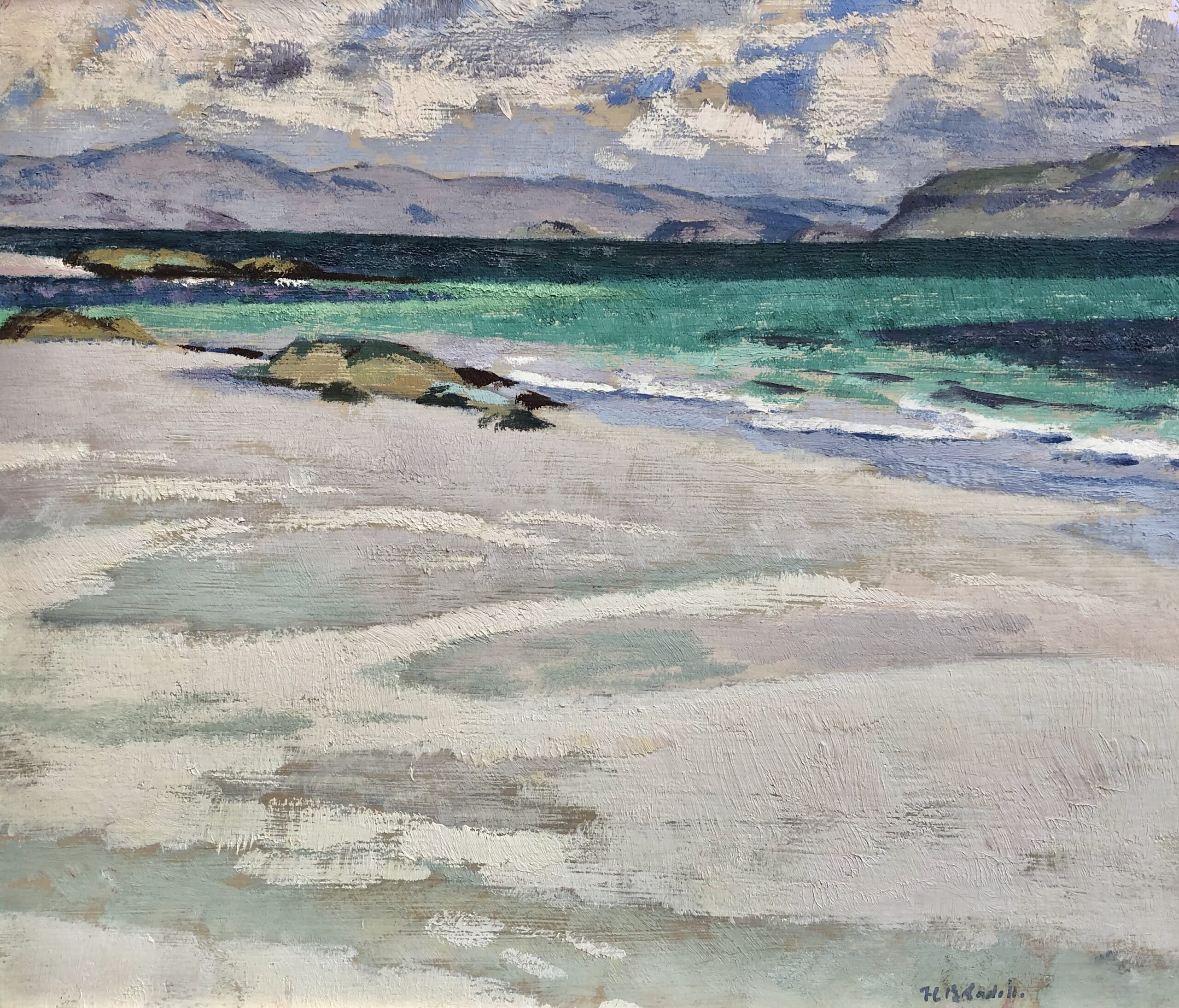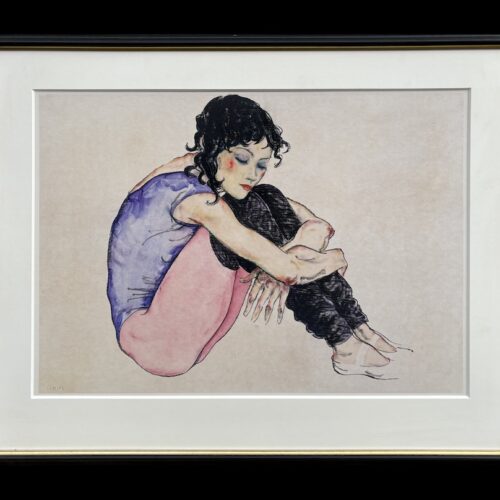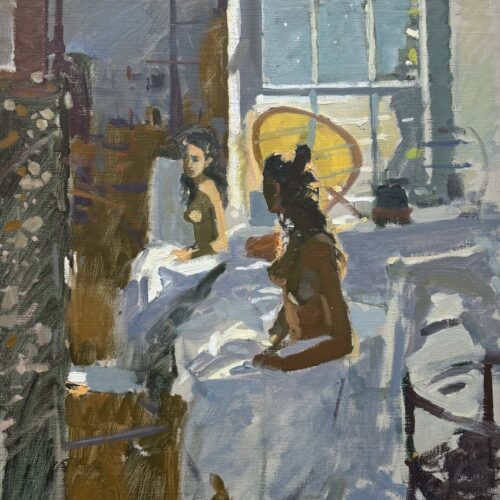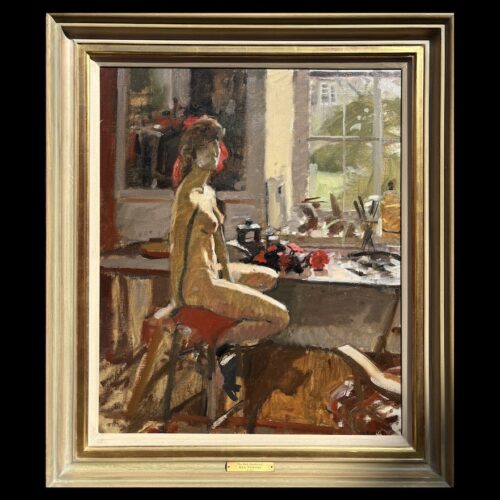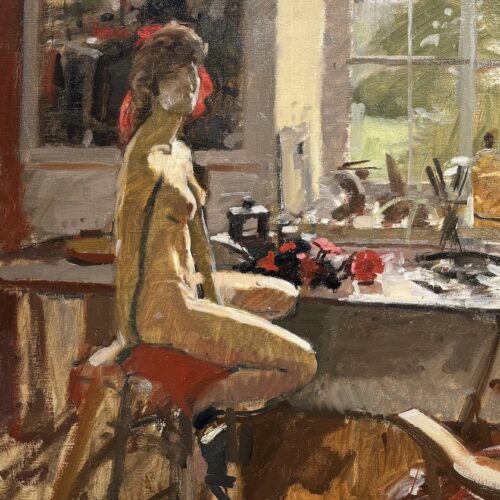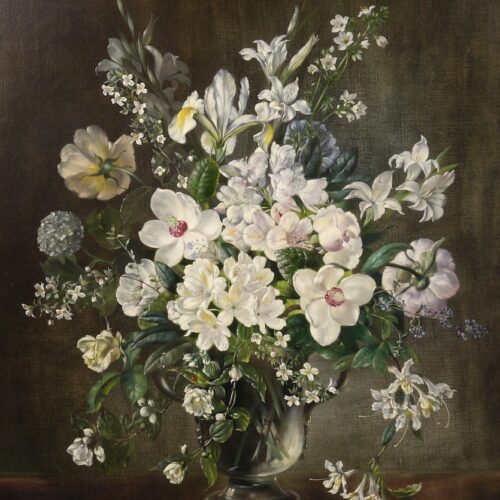Cadell visited the Hebridean island of Iona for the first time in 1912. Such was the inspiration which he found in its light, natural beauty and expansive views, that he returned there regularly until at least 1933. His trips could last from three to five months over the spring and summer, when weather conditions were at their best. Initially he stayed at the St Columba Hotel, but later he rented various cottages, most frequently Cnoc cùil Phàil, which had views over the Sound of Iona to neighbouring Mull.
One of Iona’s distinctive features is its beaches of white sand, which sparkles underneath the soft Hebridean light and through which varied rock formations emerge. This can be seen to particularly beautiful effect in the North End, to which Cadell was repeatedly drawn. In addition, he depicted other beaches and sandy coves, including at Port Bhan, views across and beyond the island, such as to Ben More on Mull and architectural features like the Abbey and Village. He took pleasure in the rhythms of daily life, portraying the islanders at work on crofts, visitors relaxing in idyllic circumstances and boats under sail and at the jetty.
Executed with swift, confident brushstrokes, his technique made the most of the texture and colour of the paper support, sometimes deliberately leaving areas bare as contributions to the overall palette and image. Cadell’s prowess in this medium was recognised by his election to the Royal Society of Scottish Paintings in Watercolour in 1935.
Iona played a key role in Cadell’s career. It provided more than twenty years’ worth of enjoyment, professional inspiration and vital income from the sale of the work he made there.

